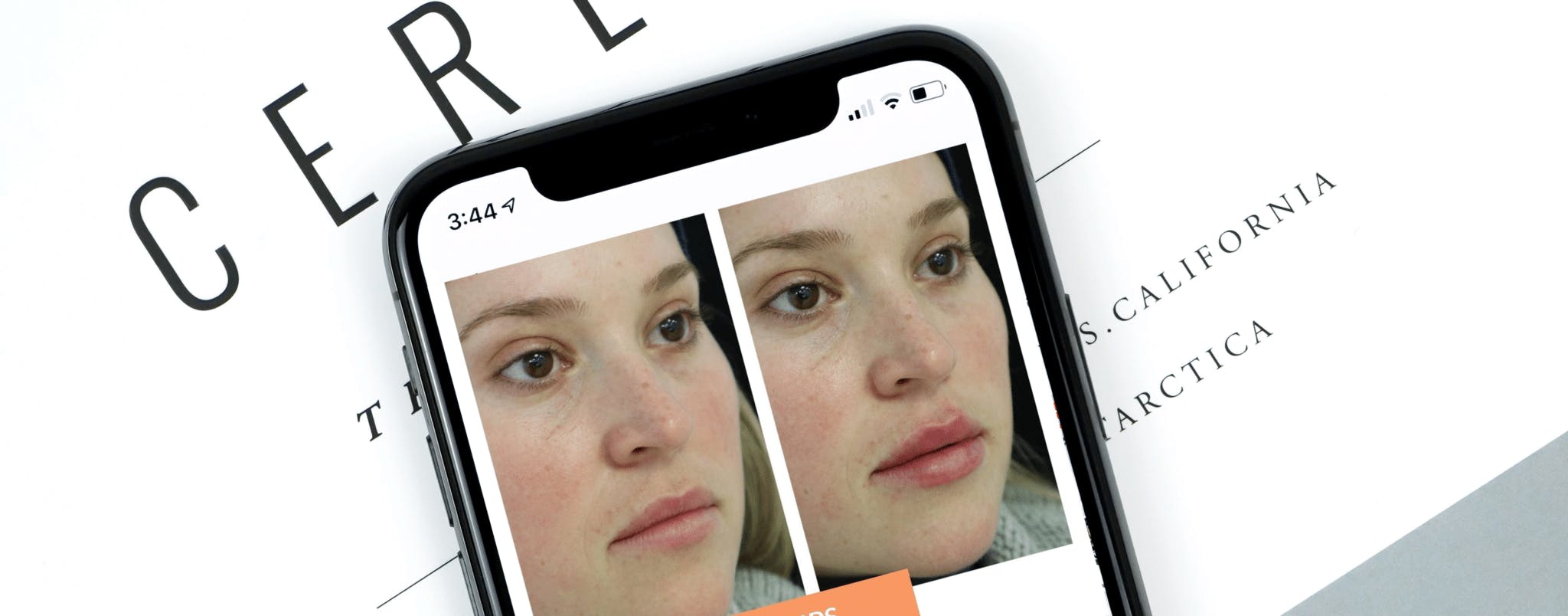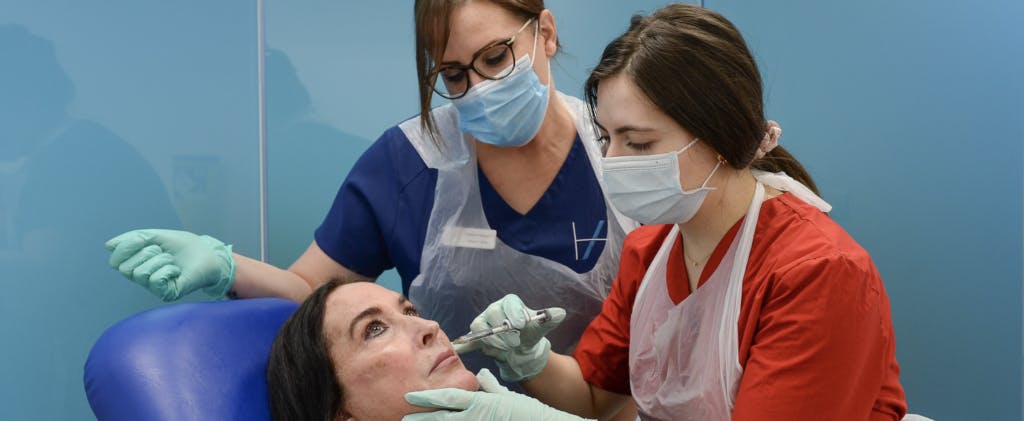Injectables: Before And After Photos

We recently looked at how to improve your clinical photography. These shots are often used to show the results of your injectables in Before and After photos.
Many aesthetics practitioners choose to share these types of images via social media, as a marketing tool to bring in new patients. But have you ever stopped to consider whether this is a beneficial form of marketing for your injecting skills?
And if you don’t post before and after photos, what will you post instead to show people what you do?
Harley Academy's Senior Clinical Mentor, Natalie Haswell, a prescribing aesthetics nurse specialist who also runs her own clinic, Haswell Aesthetics in Colchester, Essex, has some interesting thoughts on this...
Posting before and after injectables photos on social media

The UK has a number of rules for aesthetics practitioners which specifically concern the posting of injectable treatment Before and After photos on social media.
These are devised by the Advertising Standards Authority (ASA) and under these rules, the following actions are not permitted:
✖ Posting photos of any treatment which involves the use of a prescription-only medication (POM), such as botulinum toxin
✖ Promoting or selling a POM treatment via the caption text in your posts
✖ Using a filter, as these can make results appear better than they are in real life
In 2019, the ASA began a crackdown on social media, targeting any misleading aesthetic medicine content, of which there is an incredible amount. The quickest Instagram scroll through will show hashtags such as #aesthetics, #injectables or #dermalfiller.
Considering whether or not to post Before and Afters
Before and After photos are often the most liked images on an aesthetics practitioner's Instagram. They can help to bring in enquiries for new practitioners from which new clients may arise. There are, however, a number of factors to consider when deciding if posting these types of images is for you.

The ASA crackdown prompted Natalie Haswell (pictured on the left, above, during a mentoring session) to review why she, as an experienced aesthetics practitioner, was posting Before and Afters on her clinic’s social media.
Her key concerns are listed below and you will see that her ultimate decision was to stop sharing this type of imagery.
Images on injectors’ social media pages frequently belong to someone else and do not show their own work.
She wanted to know if patients would know her social media photos show her work as an injector and not somebody else’s? Also, how could she stop her images from being stolen and used by other accounts?
“They could have been copied or taken from anywhere else. Many of my colleagues have had work stolen and had other people claim it as their own, which is a really difficult situation to resolve. So it’s unreliable to assume that photos shared are the work of the injector sharing them,” she concluded.
Will my patients know my Before and After photos have not been edited?
So many Before and After photos are edited before they’re posted to social media. Haswell considered whether her patients would know her photos are never edited? After all, Instagram is such a visual medium that not everyone reads the captions. It’s so important, therefore, that the images are true to life so as not to mislead patients and give them unrealistic expectations.
She explains, “Light reflection and shadows have a big impact on aesthetic results. Also, make sure that, if you’re looking at Before and After photos that you can be assured are of that injector’s work, you are seeing all angles of their results – not just one. So, for example, if a picture is showing one side of the lips, what’s to say there aren’t lumps, asymmetry or even a haematoma or vascular occlusion hidden on the other side?”
Would posting Before and After photos really benefit my patients?
There are some positives to be gained from posting Before and After photos.
✔ Patients can see your injecting style – for instance whether you offer an over-filled look or a more natural appearance
✔ Regular images of new work will show – or at least imply – that you have a steady stream of patients and are practising regularly
✔ Those considering injectables who aren’t sure of what is possible can look at them to see the types of treatments you offer. This is particularly useful for people who are more visual and prefer to see photos instead of reading about your services and their benefits
…but are these really benefits?
Patients can see your injecting style, this is true, but they have to trust that your photos are genuinely yours, showing your work and are not adversely influenced by editing or lighting. Furthermore, it’s imperative that patients understand why a treatment that works well for one person, may not be suitable for them.
“Everybody’s face is different, everybody should be treated holistically based on their unique facial proportions and concerns. No two people should be treated in the same way. I feel we are being detrimental to the public’s mental health by giving them potentially unrealistic expectations through images of outcomes which may be unsuitable for them as a patient,” counsels Haswell.
? Posting verified new work is great, but is it actually new work or is it simply recycled images of treatments from a while ago? Natalie advises, “Have a look at aesthetics practitioners' Instagram accounts. It might be that they’re resharing photos as “throwbacks” or simply continually posting the same older images because they aren’t practising or don’t have any patients.”
“This is important because, if they don’t have any newer patients, why not? Where are their legitimate reviews that show they are actively practising and patients are happy with their results? A photo is taken straight after the event. What’s to say that a delayed vascular occlusion didn’t occur, or the aftercare has been extremely poor and the patient has had to be seen by somebody else?”
? Natalie Haswell says, “The research and articles on the benefits of posting Before and After photos states there is none! I believe the benefits are minimal compared to the downsides, hence why I now don’t share images of patients before and after their treatments. I’d rather share reviews several weeks after treatment when people have fully recovered and they’ve got their actual results, and reviews from recurrent patients who have come back.”
You can find Natalie Haswell’s insights published in full in a guest article on Comma, the global Community for Medical Aesthetics, which has received fantastic feedback. She also wrote a longer piece on this for the Aesthetics Journal which is well worth reading.
What are your thoughts on publishing Before and After photos on social media? A useful marketing tool or too much of a minefield? Let us know over on the HA Comma or via the Harley Academy Instagram account.
All information correct at the time of publication.
Download our full prospectus
Browse all our injectables, dermal fillers and cosmetic dermatology courses in one document
By submitting this form, you agree to receive marketing about our products, events, promotions and exclusive content. Consent is not a condition of purchase, and no purchase is necessary. Message frequency varies. View our Privacy Policy and Terms & Conditions
Attend our FREE open evening
If you're not sure which course is right for you, let us help
Join us online or in-person at our free open evening to learn more
Our Partners













STAY INFORMED
Sign up to receive industry news, careers advice, special offers and information on Harley Academy courses and services

